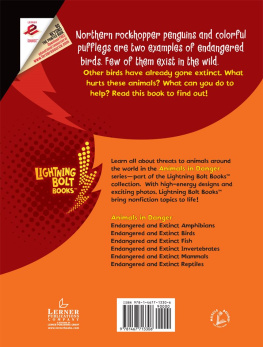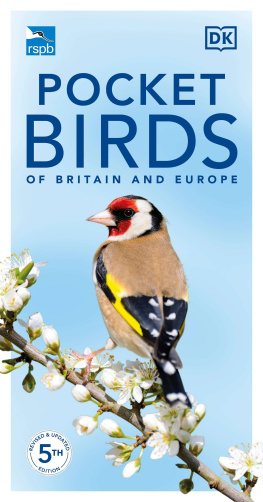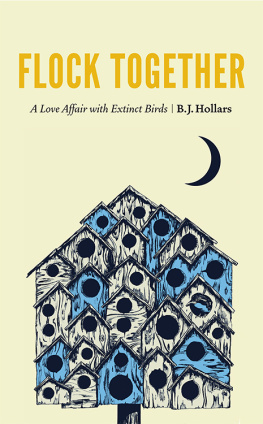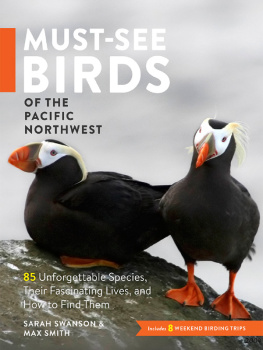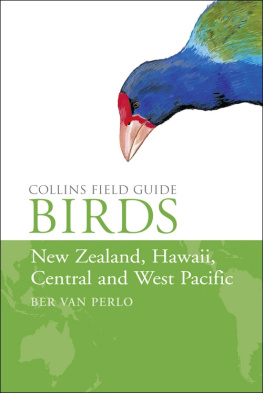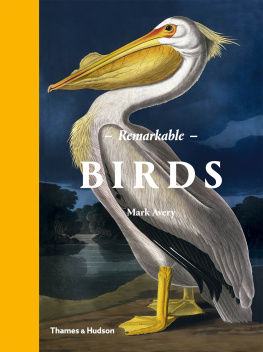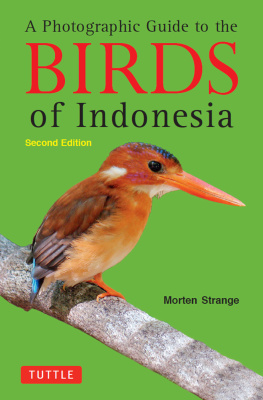
Published 2012 by T & AD Poyser, an imprint of Bloomsbury Publishing Plc,
50 Bedford Square, London WC1B 3DP
This electronic edition published in 2012 by Bloomsbury Publishing Plc
Copyright 2012 text by Julian P. Hume and Michael Walters
Copyright 2012 illustrations by Julian P. Hume
The right of Julian P. Hume and Michael Walters to be identified as the author of this work has been asserted by him in
accordance with the Copyright, Designs and Patents Act 1988.
ISBN: 978 1 4081 5725 1
A CIP catalogue record for this book is available from the British Library
All rights reserved. You may not copy, distribute, transmit, reproduce or otherwise make available this publication (or any part of it) in any form, or by any means (including without limitation electronic, digital, optical, mechanical, photocopying, printing, recording or otherwise), without the prior written permission of the publisher. Any person who does any unauthorised act in relation to this publication may be liable to criminal prosecution and civil claims for damages.
Edited by Jim Martin
Visit bloomsburywildlife.com to find out more about our authors
and their books, and to read our blog
Visit www.acblack.com to find out more about our authors and their books. You will find extracts, author interviews, author events and you can sign up for newsletters to be the first to hear about our latest releases and special offers.
by Errol Fuller
To many people, the word extinct conjures up visions of gigantic creatures living aeons ago, beasts separated from us, not just by their size and terrifying power, but by unimaginable gulfs of time. Their connection with our own lives seems so remote that it is easy to reduce them to figures of fantasy, rather than as creatures that were once of flesh and blood. We may hear the story of the dinosaurs or of the mammoths with awe and wonder, but these tales hardly impact on our own lives.
But in recent years the idea of extinction and extinct creatures has begun to assume a new dimension. The frightening speed with which the natural world is being destroyed forces us to consider extinction in a much more personal way. No longer can it be reduced to a matter of great lumbering animals created in celluloid to excite, alarm or entertain us. The concept of the extinction of species is now at our doorstep, rather than confined to a distant past to which we need pay little real attention.
With this awareness has come a growing interest in species that have become extinct in comparatively recent times, an interest that leads to the realisation that such species have an intrinsic fascination all of their own. Many of those that have vanished in what might loosely be termed recent historical times have left behind traces and records of their interaction with man. They seem almost close enough to touch, yet will now remain forever just out of reach. Not only do they retain the elusive and intriguing quality of mystery, but many were remarkable creatures in their own right. Among mammals one might single out the Thylacine of Tasmania, or the Quagga of southern Africa. Among birds there are many species that have fascinating stories attached to their names, or are weird and wonderful in appearance. There is the Passenger Pigeon, for instance, or the Huia, or the Great Auk. And, of course, there is the Dodo.
But perhaps it is not just the interesting and curious nature of many species that makes recently extinct birds so fascinating. Perhaps the very idea of a bird becoming extinct is something that is particularly startling. After all, birds are such symbols of life, movement, vitality and freedom. Their capacity for flight and their very familiarity the fact that they live so noticeably all around us make it doubly difficult to come to terms with the idea that a species should no longer exist.
Anyone who finds the subject intriguing (and perhaps many who dont yet realise that they do) will discover that this book puts all the relevant information concerning recently extinct birds at their fingertips. This is not just another annotated list; it is a comprehensive account of what is known. A book of this kind cannot be compiled after just a few months routine research. It is a labour of love and represents the study of a lifetime. In this particular case it represents the study of two lifetimes!
Julian Hume and Michael Walters have brought together their great knowledge, experience, and just plain passion for the subject, into the production of this book.
For many years Michael Walters held together the bird department at The Natural History Museum. From time to time others may have given themselves lofty titles, but it was he who knew exactly where everything was, and it was he who could answer the most obscure inquiry with both politeness and enthusiasm. He has brought these qualities and his vast knowledge to the present work.
Julian Hume has contributed both his scholarship and his enormous practical experience in the field to this book. For years he has travelled the world seeking out snippets of information or gaining insights into the actual terrains that extinct birds once inhabited. Like me, Julian cannot resist drawing and painting those things that interest him, and his charming line drawings give the book an added dimension.
Doubtless, this volume will be compared with the book on extinct birds that I wrote several years ago, but in reality any such comparison is to little purpose. My book is something of a romantic ramble through the subject, whereas the present work is a tremendous compendium of information. No stone has been left unturned in the authors pursuit of facts some obscure, some easier to come by and the result of their efforts is presented in a form that is crystal clear and easily accessible. Anyone coming to this work may rest assured: Julian Hume and Michael Walters have ruthlessly uncovered whatever information exists, and set it down in this truly encyclopaedic volume.
I have been most fortunate to have worked and corresponded over the years with an array of scientists, artists and colleagues interested in extinct birds. In particular, Storrs Olson and Errol Fuller have been inspirational, and our endless discussions have provided me with so many insights. I am forever grateful for that. I especially thank my partner, Lorna Steel, and Jim Martin from T & AD Poyser, who have both put up with my constant grumbling during the production of this book. Jim has worked closely and patiently with me on the project for its entirety; his inspired editorial skills and background knowledge kept things moving forwards, often when seemingly impassable obstacles loomed ahead. The book is much improved by Lorna and Jims efforts. I thank the following friends and colleagues for correspondence and discussions, and for those who have provided access to museum specimens, rare books and manuscripts in their care, in particular Robert Prs-Jones, who has been an inspiration throughout my later career.
In the United Kingdom I thank Anthony Cheke, Carl Jones, Glyn Young, Nigel Redman, Dave Martill, Dave Loydell, Bob Loveridge, Mike Barker, Darren Naish, Stig Walsh, the late Cyril Walker, the late Colin Harrison, Nick Arnold, Graham Cowles, Sandra Chapman, Phil Rainbow, Florence Gallien, Jo Cooper, Mark Adams, Douglas Russell, Alison Harding, Effie Warr, Judith Magee, Paul Cooper, Mike Brooke, Ray Symonds, Mathew Lowe and Andrew Kitchener. Special thanks to Nigel Collar, who provided the ultimate proof-read; the book benefited greatly from his input. In the United States I thank Helen James, Dave and Lida Burney, Dick and Karen Carruthers, Dave Staudt, Paul Sweet, Carla Dove, Gary Graves, Pamela Rasmussen, Guy Tudor, Albert Gilbert and Dave Steadman. In France I thank Ccile Mourer-Chauvir, Roger Bour, Christian Jouanin, JeanFranois Voisin, Daniel Goujet, Clair Sagne, Virginie Bouetel and Christophe Thbaud. In Runion I thank Sonia Ribes, Jean-Michel Probst, Pierre Brial, Dominic Strasberg, and Auguste and Christine de Villle. In Mauritius I thank the late France Staub, the late Claude Michel, Jean-Michel Vincent, the late Alfred North-Coombes, John Mauremootoo, the late Clare Mauremootoo, whose passing was so premature, Anwar Janoo, Alan Grihault, Christian Foo Kune, Vikash Tatayah and all of the staff both past and present of the Mauritius Wildlife Foundation, Vincent Florens, Claudia Baider, Michele Sabelli, and the staff of the Mauritius Institute. In Rodrigues I thank Aurel Andre, Richard Payandee, Arnaud Meunier, Alfred Begu and Sweety Sham Yu. In the Netherlands I thank Perry Moree, Pieter and Els Floore, Ren Floore, Kenneth Rijsdijk, Marijke Besselink, Perry de Louw, Hanneke Meijer, Tamara Vernimmen, John de Vos, Ren Dekker, and all of the Dutch team who have been working on the Mare aux Songes project over the years. In Australia and New Zealand I thank Steve Bourne, Nick Porch and Joe Forshaw, and in particular Trevor Worthy, whose achievements have been a source of motivation. In the Soviet Union I thank Vladimir Loskot and Vera Richter.


